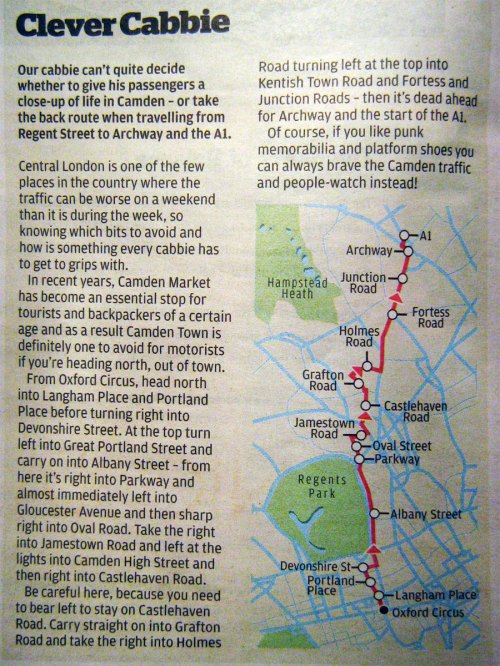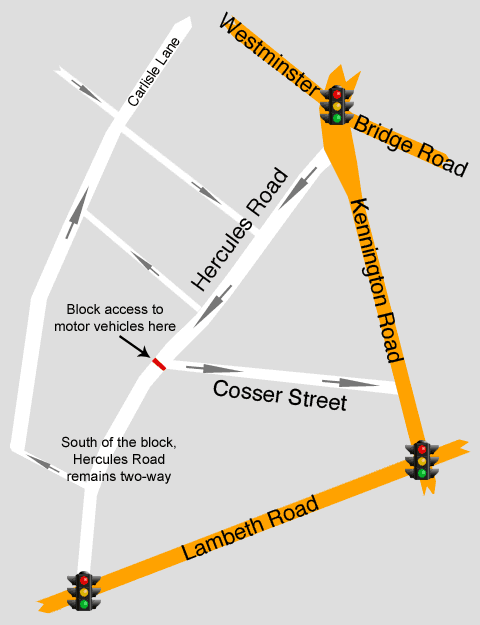I’m living among lunatics – and they’re in charge! Don’t tell them, or they’ll think it’s me that’s crazy.
I have weird, deviant beliefs, you see.
Such as this: Residential streets should be for the use of residents and their visitors, not for use as rat-runs for people passing through.
I know this makes sense to you, dear reader, as you and I can see I’m making sense. But to most people out there, the idea that residential streets are for the people who live there is a strange, crazy notion which must be resisted at all costs.
I refer you to my main exhibit, a clipping from London’s main newspaper, the Evening Standard:
So here we have a hypothetical punter who wants to go from the tube station at Oxford Circus to the tube station at Archway, and decides that the best way to get there is by taxi.
But fair enough – maybe they have lots of luggage, or are a wheelchair user. But because the Evening Standard’s “Clever Cabbie” knows that the direct route through Camden will be congested, they can use a route which avoids the traffic jams and instead cuts through quiet residential streets.* (Well they would be quiet streets if it wasn’t for all the rat-running traffic.)

Do you live near Holmes Road or Spring Place? The Evening Standard thinks there should be more transient cars passing through here! (Photo: Google Maps)
The offensive thing is that vehicles using routes like this provide nothing of benefit to the neighbourhood, but they bring noise, fumes and danger.
Why do we allow our residential streets to be used this way? Why are routes like this even possible – shouldn’t all through-traffic be on main roads? Do councils, despite their fine talk about ‘better neighbourhoods’ and so on, secretly like these rat-runs because they reduce congestion elsewhere?
But again, this proves how out of touch I am with the general consensus. That London’s main newspaper can even consider printing such a piece (and it seems to be a regular one) shows how rat-running is considered normal, acceptable, even something to be encouraged, whereas safe and pleasant streets are the dreams of mad people like you and I.
I haven’t done The Knowledge of course, but I wonder what our Clever Cabbie’s route would be if residential streets were unavailable for rat-running (as they are in any sensible country). Would they head East along Euston Road/Pentonville Road joining the A1 at Angel? Or would Caledonian Road be pressed into service?







 The Alternative Department for Transport is written by, and the personal opinion of,
The Alternative Department for Transport is written by, and the personal opinion of, 


